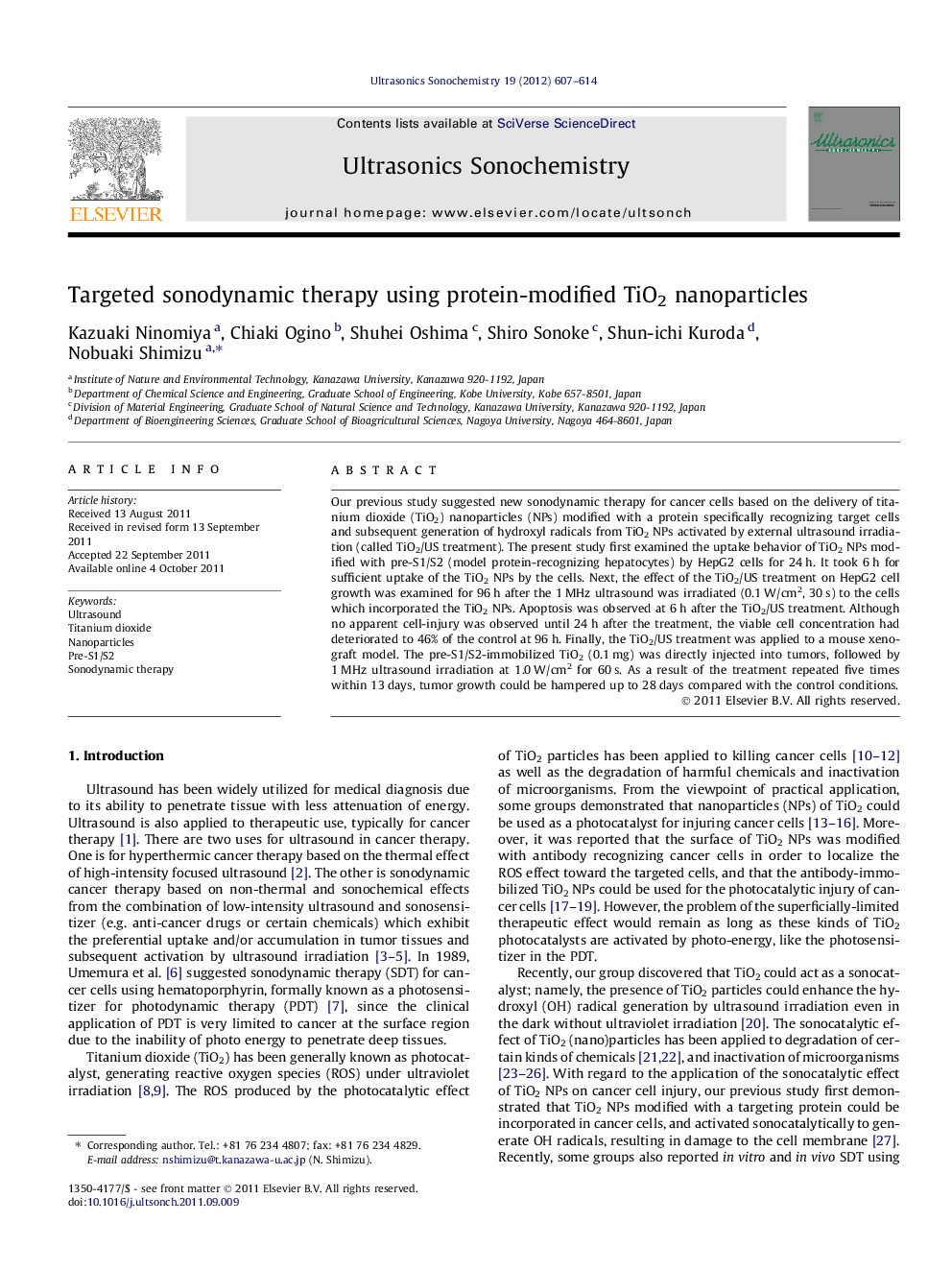| کد مقاله | کد نشریه | سال انتشار | مقاله انگلیسی | نسخه تمام متن |
|---|---|---|---|---|
| 1265406 | 972217 | 2012 | 8 صفحه PDF | دانلود رایگان |

Our previous study suggested new sonodynamic therapy for cancer cells based on the delivery of titanium dioxide (TiO2) nanoparticles (NPs) modified with a protein specifically recognizing target cells and subsequent generation of hydroxyl radicals from TiO2 NPs activated by external ultrasound irradiation (called TiO2/US treatment). The present study first examined the uptake behavior of TiO2 NPs modified with pre-S1/S2 (model protein-recognizing hepatocytes) by HepG2 cells for 24 h. It took 6 h for sufficient uptake of the TiO2 NPs by the cells. Next, the effect of the TiO2/US treatment on HepG2 cell growth was examined for 96 h after the 1 MHz ultrasound was irradiated (0.1 W/cm2, 30 s) to the cells which incorporated the TiO2 NPs. Apoptosis was observed at 6 h after the TiO2/US treatment. Although no apparent cell-injury was observed until 24 h after the treatment, the viable cell concentration had deteriorated to 46% of the control at 96 h. Finally, the TiO2/US treatment was applied to a mouse xenograft model. The pre-S1/S2-immobilized TiO2 (0.1 mg) was directly injected into tumors, followed by 1 MHz ultrasound irradiation at 1.0 W/cm2 for 60 s. As a result of the treatment repeated five times within 13 days, tumor growth could be hampered up to 28 days compared with the control conditions.
► New sonodynamic therapy using titanium dioxide (TiO2) nanoparticles was suggested.
► TiO2 nanoparticles were modified with a targeting protein recognizing specific cells.
► Hydroxyl radical was generated from TiO2 nanoparticles under ultrasound (US) irradiation.
► TiO2/US treatment could prevent the growth of cancer cells in vitro.
► TiO2/US treatment could prevent tumor growth of the xenograft model.
Journal: Ultrasonics Sonochemistry - Volume 19, Issue 3, May 2012, Pages 607–614